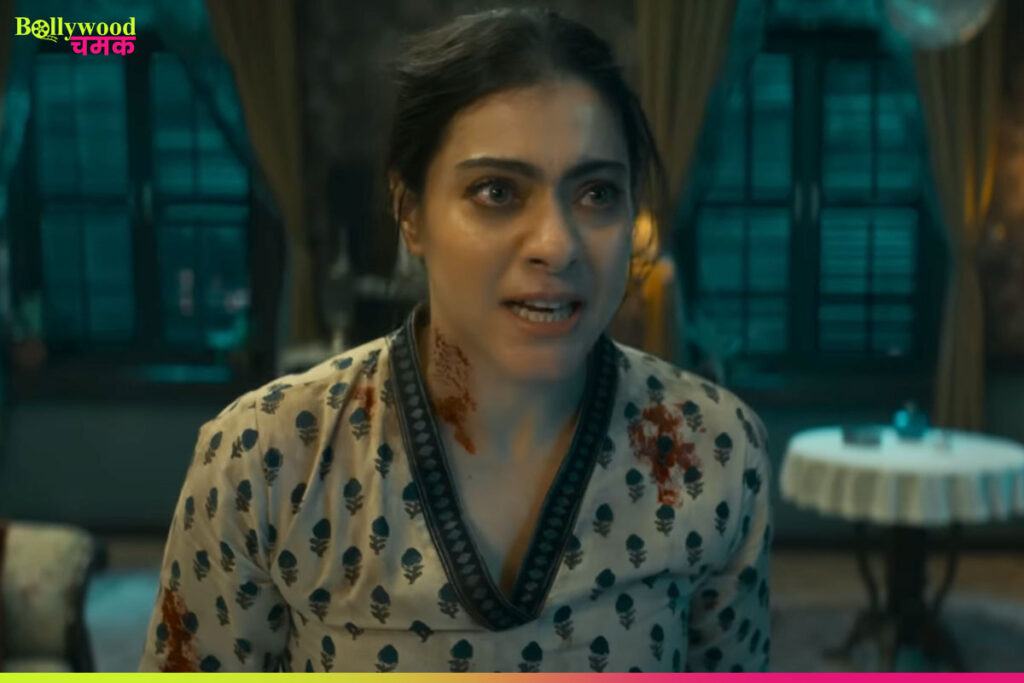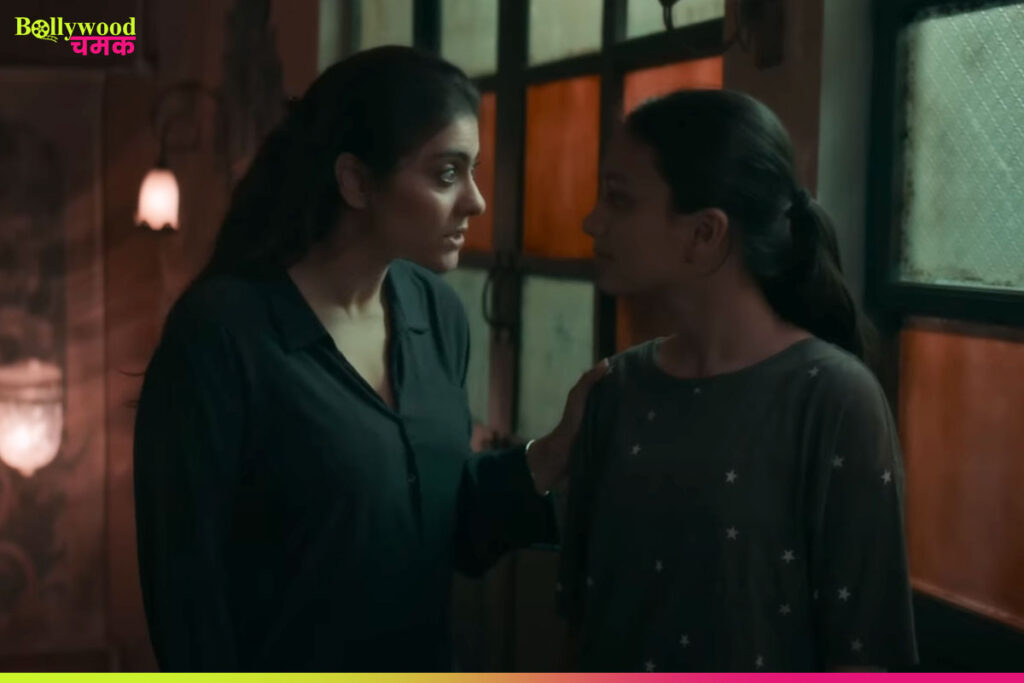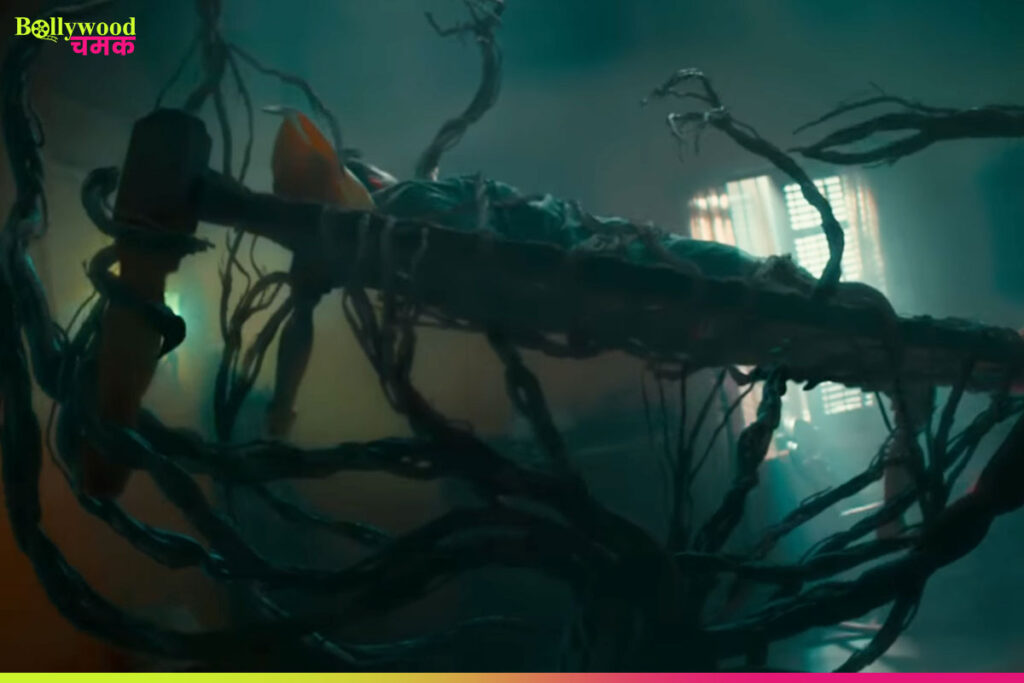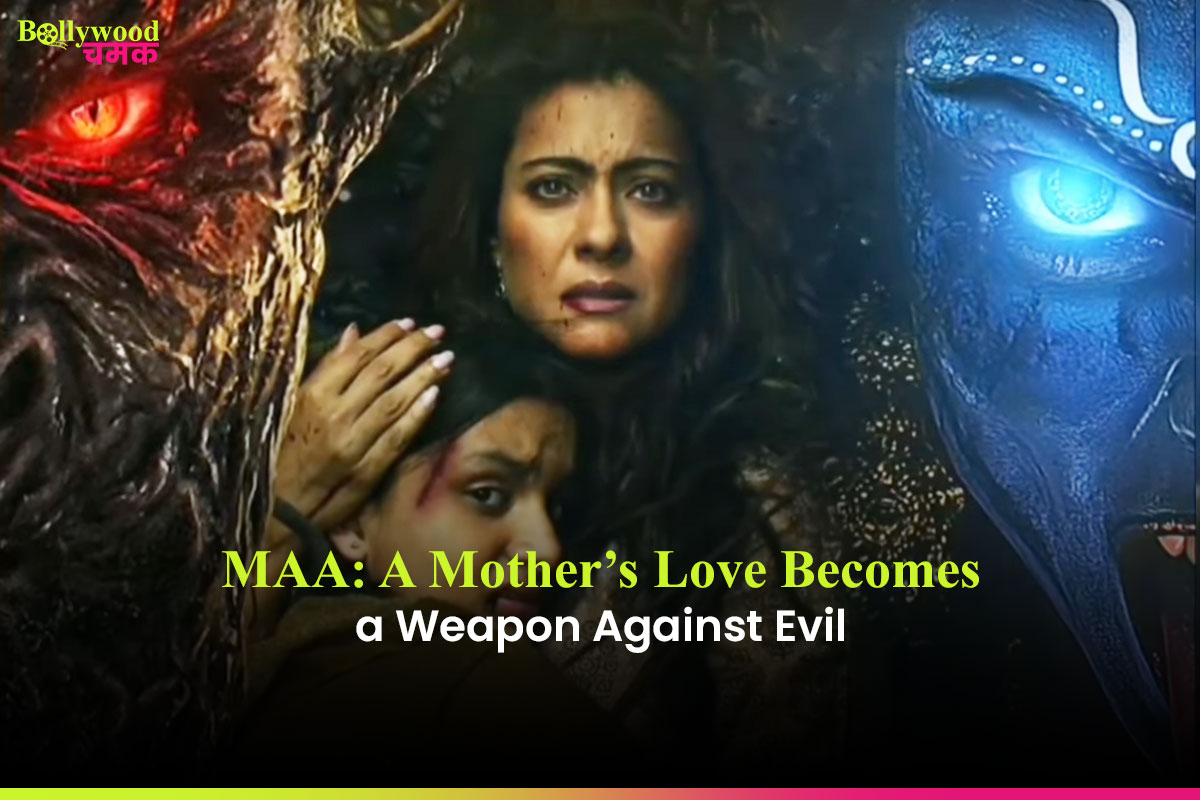Maa: a myth-horror drama exploring motherhood, patriarchy & power. Bold themes, uneven execution. Read full review here!
Rating: ★★☆☆☆
Director: Vishal Furia.
Cast: Kajol, Ronit Roy, Indraneil Sengupta, Kherrin Sharma, Dibyendu Bhattacharya

Some things you simply do not mess with, and a mother defending her child is one of the top on that list. Maa, a Vishal Furia directorial venture with the ubiquitous Kajol in the lead, is a movie that tries to mix mythology, horror, and social message into one power-packed movie. Its intentions are good, but this is dragging under its own ambition.
Considered a supernatural thriller, Maa is embedded in the ghostly country of Bengal. Essentially, it is a movie about womanhood, intergenerational trauma, and breaking the centuries-old patriarchy. Unluckily, along with an impressive premise and a strong central performance, the movie fails to accomplish everything it has promised thematically.

MAA: A Mythological Story That Is Based on Maternal Power
This tale starts with a modern, quick-witted, and intelligent woman called Ambika (Kajol) who leads more or less a calm life with her husband, Shuvankar (Indraneil Sengupta), and a young child, Shweta (Kherin Sharma, earnestly). Shweta is an inquisitive 12-year-old with a penchant for art and an interest in the past of her family.
Despite all the best efforts of the couple, now they can no longer conceal the black secrets of their ancestral roots. An accidental event causes the change of life in the family, and because of this, both Ambika and Shweta are forced to travel across the land and go to the place where the roots are of their family, the haveli, which is several centuries old, located in Chandrapur, lost in the mysterious misty rural Bengali setting.
It is the land where time seems to be at a standstill, and myths do not pass away.
Joydev (Ronit Roy) is a trustworthy person who has safeguarded the secrets of the house for a long time. However, even he is powerless in the face of the past, which is scrambling its way back to the fore when Ambika comes back.
The next sequence is the plunge into a horrific thriller that connects the current state of affairs with the bloody past of Ambika. There are flashbacks of dismal scenes: ritual murders of baby girls and an evil demon called Raktbeej, who cursed the village many years ago and still haunts it.
Thematics on The Importance of Breathing Easily
Maa addresses some rather risky themes: violence based on patriarchal principles, female infanticide, period and menstrual taboos, and women’s empowerment. These are not topics that can be approached without hesitation, and to the credit of the movie, it tries to bring them up in the story and not as side notes.
One of the stronger scenes is when Ambika freely discusses menstruation with her daughter, making something commonly understood to be a thing to be ashamed of into something that would be normal and natural enough to speak about. It is a scene of both humanity and powerfulness that can be easy to identify with in many families, and is welcome and as real as possible.
But the problem is that Maa does not succeed in conjoining these thematic insights into a concise storyline. The first half of the movie, although atmospheric, wanders around plots that are too extensive to ever be justifiable. The second part, when the horror elements come more violently, causes unnecessary chaos and stops being emotion-centered.

MAA: The Spirit of the Movie
Now being real, Kajol has done enough to get the people to go see Maha, and she deserves such an honor. She is subtle, strong, and multidimensional as Ambika. She is easily cold and hot, cool and fierce, which solidifies the film despite the shakiness of the screenplay.
You sense all her presence in the film when she takes up the form of a Kali avatar in the climactic scenes. It touches not only the mythological but the emotional as well. She invests the whole thing with steep determination, belief in pain, anger, and godly power, so had the rest of the film been on her level, Maa would have been something special.
Sampling Atmosphere, Uneven CGI
In part, the movie is presented well visually. The production design is bold, in particular, the ancestral haveli with its moss-covered walls, old-fashioned furniture, and dark corners full of secrets of the past. The wood around the house is just as creepy, with its grotesque trees and hissing silence, which creates a strong feeling of unease.
The sequence of Kali Puja, when the dancers dressed in white and red sarees in along by flickering diyas and beating drums, is breathtaking and spine-chilling. It is also raw, which seems to be in synch with the mythology at its basis in the story.
Yet, the visual effects, particularly the ones employed to portray the demonic presence along with the supernatural events, are somehow unsatisfactory and even annoyingly fake. In a movie where you are asking so much of the viewer in mashing and matching myth and horror, the visual grit cancels out the emotive and story-driven tension.
Support Cast/Characters
The author of this take on the Ganga gang, Ronit Roy as Joydev, brings heft to the table without having much to work with. Indraneil Sengupta also acts as the stable background as the husband between reason-truth and history. As young Shweta, Kherin Sharma combines the element of a naive inquisitiveness with innocence, making her the center of the story as well as the weakness.
Dibyendu Bhattacharya is a nothing-talking old retainer who is a mysterious character that might have brought in so much tension, but that is left unexploited.
The Demon, the Curse, and the Lost Opportunity
The main antagonist of the movie is called Raktbeej and is a demon of Hindu mythology that increases in number with each drop of blood. This intense metaphor would have been applied to compare the toxic idea of masculinity and violence, along with the lack of escaping the vicious circle of oppression that women are exposed to.
The story, instead, becomes just a jumbled-up mess of horror tropes and crammed exposition as well as metaphysical hogwash. The last act of the play, when Ambika plunges forth into the battle with Raktbeej in her goddess form, seems hurried and lacking any emotions, though it has the potential of exploring themes.
That is unfortunate since the setup is solid, and the mythological allusions carry a payoff. Yet on its own, with no smashing, emotionally loaded climax, the film falls where it ought to have flown.
Final Verdict
Maa is a movie with ambitious goals, and its attempt to address issues such as patriarchal concepts and condescending discussions around womanhood is commendable. Kajol does her part with true dedication and depth, and there are instances of real visual and emotional poetry sprinkled about.
Yet, its uneven writing, a wandering first act, a disorganized second one, and pathetic CGI prevent the movie from being what it should have been. It fails to be anything because it tries to be everything—a mythological thriller, a social commentary, and a horror, but it can hardly be called anything, at least.
Nevertheless, if you are a Kajol fan or like films involving a mix of social issues and folklore, Maa is a movie you might want to make time to watch; just do not expect too much.
Also Read: Kajol’s Haunted Ramoji Claim: Genuine Fear or Smart Hype for Maa?

